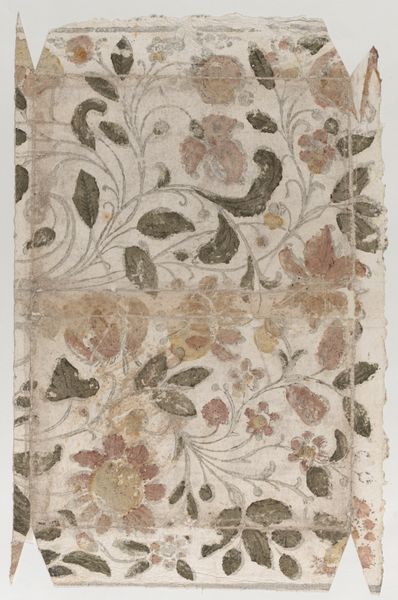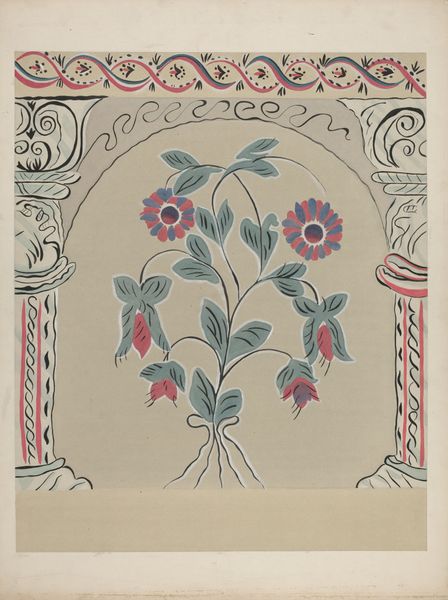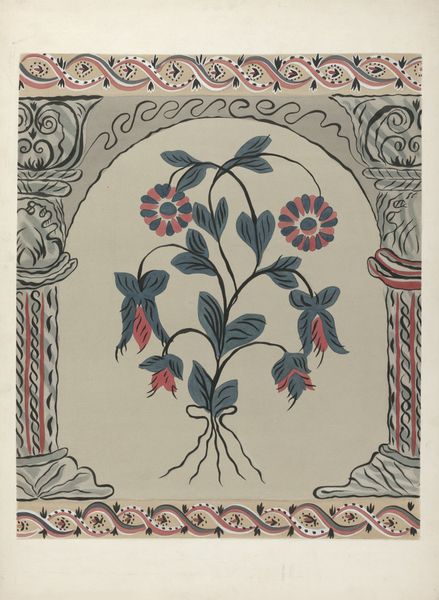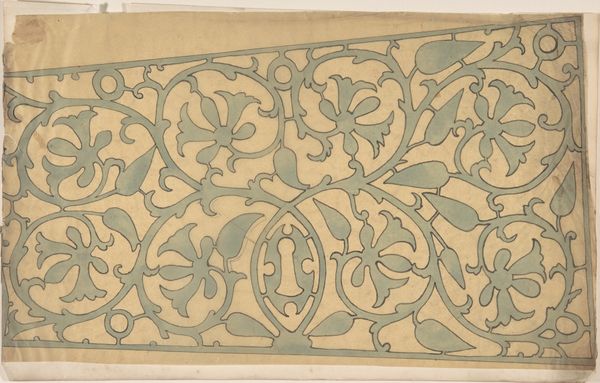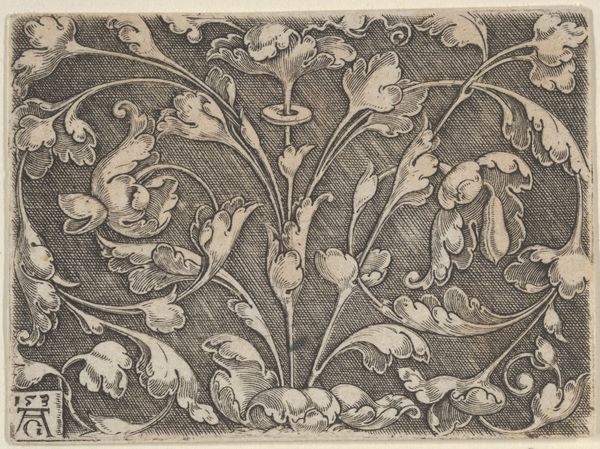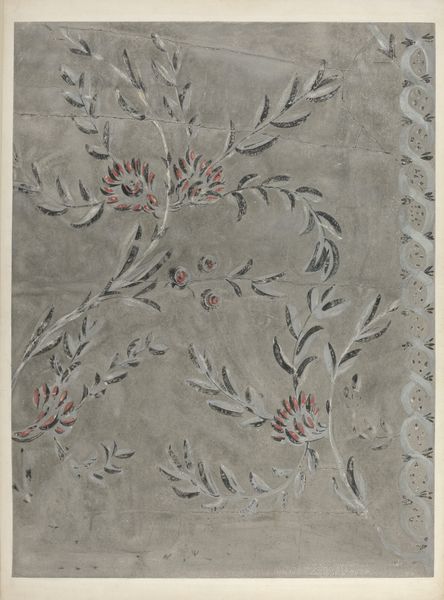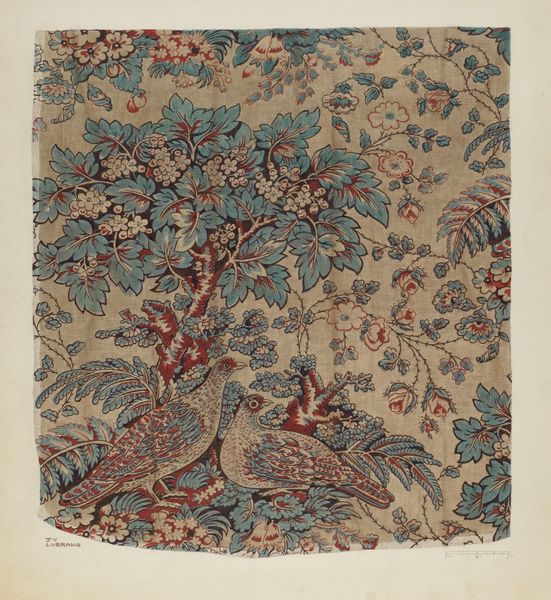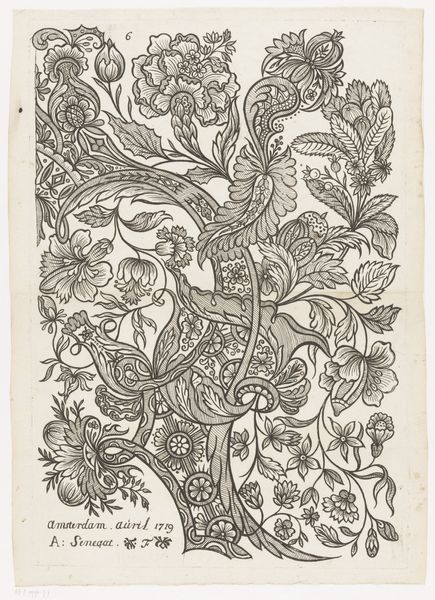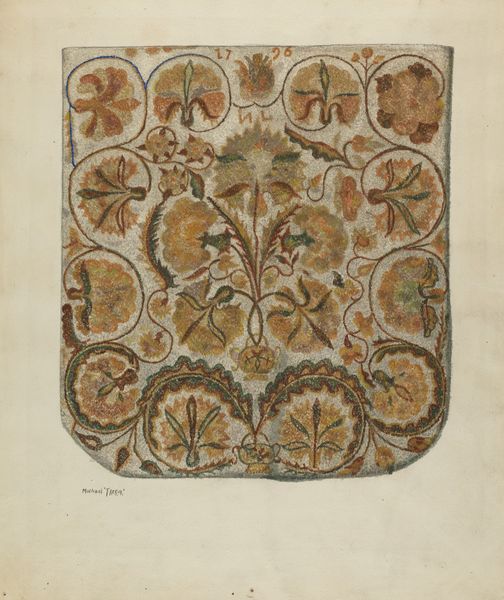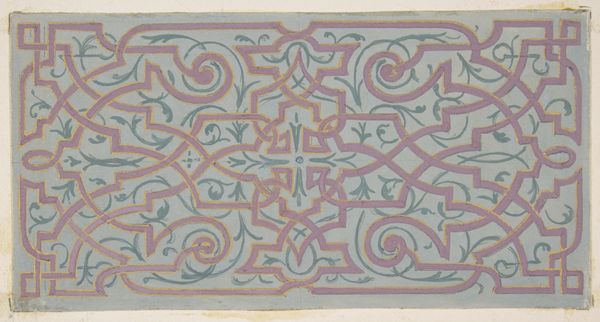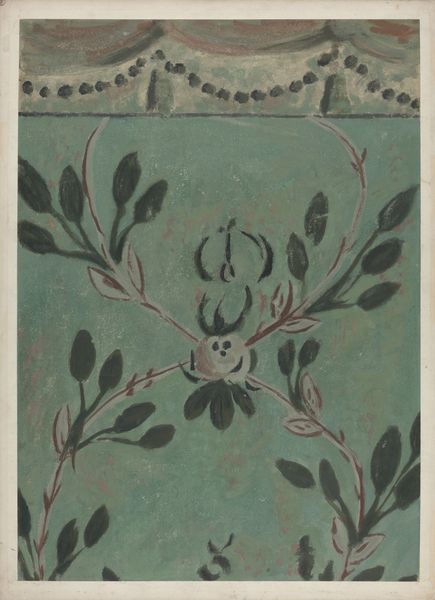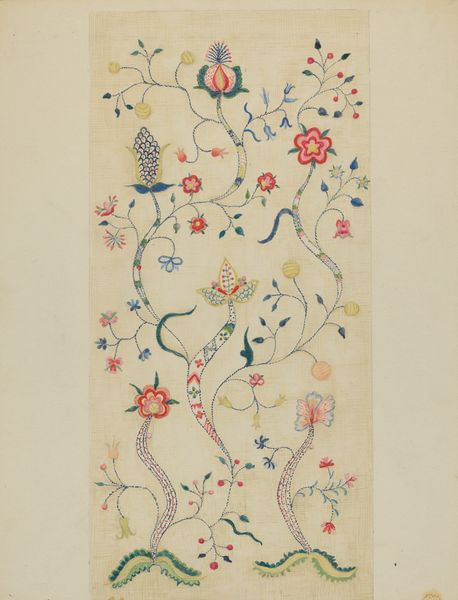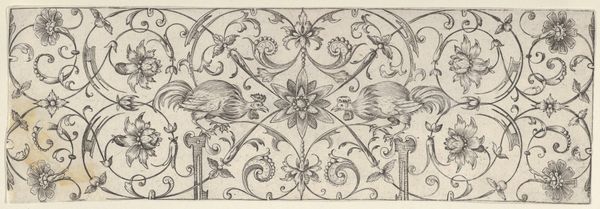
drawing, paper, ink
#
drawing
#
art-nouveau
#
linocut
#
landscape
#
figuration
#
paper
#
ink
#
decorative-art
Dimensions: height 280 mm, width 870 mm
Copyright: Rijks Museum: Open Domain
Editor: Here we have Gerrit Willem Dijsselhof's "Fazanten; voorstudie voor een wandbespanning", made between 1895 and 1896. It's an ink drawing on paper. I'm struck by how symmetrical the composition is, it gives a strong sense of balance and almost feels like a decorative emblem. What stands out to you, looking at it from an art perspective? Curator: The emphasis on symmetry is indeed a crucial aspect. Observe how Dijsselhof employs line and shape. The pheasants, mirror images of one another, create a central focal point, while the stylized foliage interweaves them, establishing a cohesive, decorative field. The repetition of the curved lines is key to understanding how the design is intended to flow across a wall. Editor: So you’re focusing on how the visual elements themselves create meaning, regardless of what a pheasant might symbolize. Is that correct? Curator: Precisely. My analysis pivots on the interplay of form and pattern. Semiotically, the lines and shapes function as signifiers of elegance and organic growth within a formalized structure. Consider the chromatic choices: the subdued palette, restrained and harmonious, dictates that this piece aims to please aesthetically by avoiding overt symbolism and loud colors. It invites introspection on form and pattern first. Editor: I see. So, instead of trying to interpret the meaning of the pheasants, you're analyzing how the lines and colours work together to create an aesthetic experience. How the whole is constructed to do that? Curator: Exactly! Now, think about the function of this as a study for a wallpaper. How might the repetition of this specific structure play into creating an entire room? Editor: It is an interesting choice and creates a balanced art work but could make the space a little rigid when you replicate this multiple times. This analysis really opened my eyes to looking past the subject and towards the core elements. Curator: And considering the piece as a building block is central to formalist inquiry into decorative art. A stimulating observation, indeed.
Comments
No comments
Be the first to comment and join the conversation on the ultimate creative platform.
